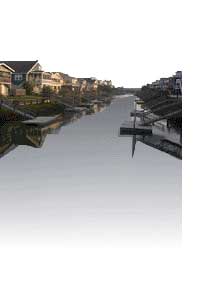Bird watching has become a major industry
in North America (Canada, USA and Mexico).
I is worth US $25 billion a year and employs
over 60,000 people. It rivals the chemical
steel industries in economic clout.
Bird watching is a non-consumptive use of
renewable resources,dependant uon the
protection of wildlands and wilderness habitat.
It thrives and grows on the protection of
biodiversity.
Yet the economy and employment provided by
bird watching is being threatened by
traditional economic activity, such as forestry
(levelling forests, strip-mining, and chemical
industries, that destroy bird habitat, pollute
bird air and water, and reduce biodiversity.
Unfortunately, there is no Bird Watching Industry Association that has matched lobbying clout of the
Mining or Pulp and Paper Associations. How
often do you hear an orchestrated complaint from
the forest industry that environmentalists are
threatening logging jobs and threatening economic
growth? What you don't hear are the bird watching
jobs and others like fisheries jobs are
threatened by the clear-cut logging and strip-mining.
It is no longer a matter of forestry, mining,
oil extraction versus the environment. It is no
longer a matter of economic engines being stymied by
nature-lovers. It is a matter of economics versus economics. Jobs versus jobs. There is big money and
huge job-creation in environmentally-friendly
jobs such as bird watching. An economic balance must be struck between the two economies. Part of this balance includes providing a strong lobby on behalf of bird watching and the environment industries that are being
threatened by unsustainable development. Part of this balance means modifying tax and fiscal measures
to level the playing field between the
competing economies. It also means shifting to a sustainable economic accounting approach by both
governments and industry.
NEW YORK TIMES REPORTS ON BIRD WATCHERS
"The quiet, teeming world of bird watchers and
feeders, includes about one- fifth of the American population, more than 50 million people who
outnumber hunters and anglers combined, according
to the U.S. Fish and Wildlife Service." The
NYT's reported that, "bird watchers now spend more
than US $25 billion a year on feed, binoculars,
travel and high-tech innovations like winterized
birdbaths and television "nest cams" to track their
plumed favourites from home or watch penguins
caper live on the Internet. Various birding and
wildlife groups are forming an 83-member policy council through the conservancy dedicated to building political awareness and translating it into budget and legal muscle
to protect the myriad of non-game birds fluttering under the gaze of this special-interest public". Hundreds of
high-style bird food stores have opened, offering everything from the Yankee Flipper (a battery-powered feeder whose perch begins wildly spinning at the touch of an intrusive squirrel to cast him off) to Under Cover Coffee (purist beans harvested without the usual denuding of bird habitats).
Visit Visit the Audubon
Society website at http://www.audubon.org/campaign/ .
the birdwatchers' Council website at http://www.abcbirds.org . Also see the
American Birding Association website at http://www.americanbirding.org .
Source, "As Their Numbers Soar, Birders Seek Political Influence to Match",
by Francis X., Clines, New York Times, February 4, 2001
THE AUDOBON SOCIETY THE BIRDWATCHERS COUNCIL THE AMERICAN BIRDING ASSOCIATION |
